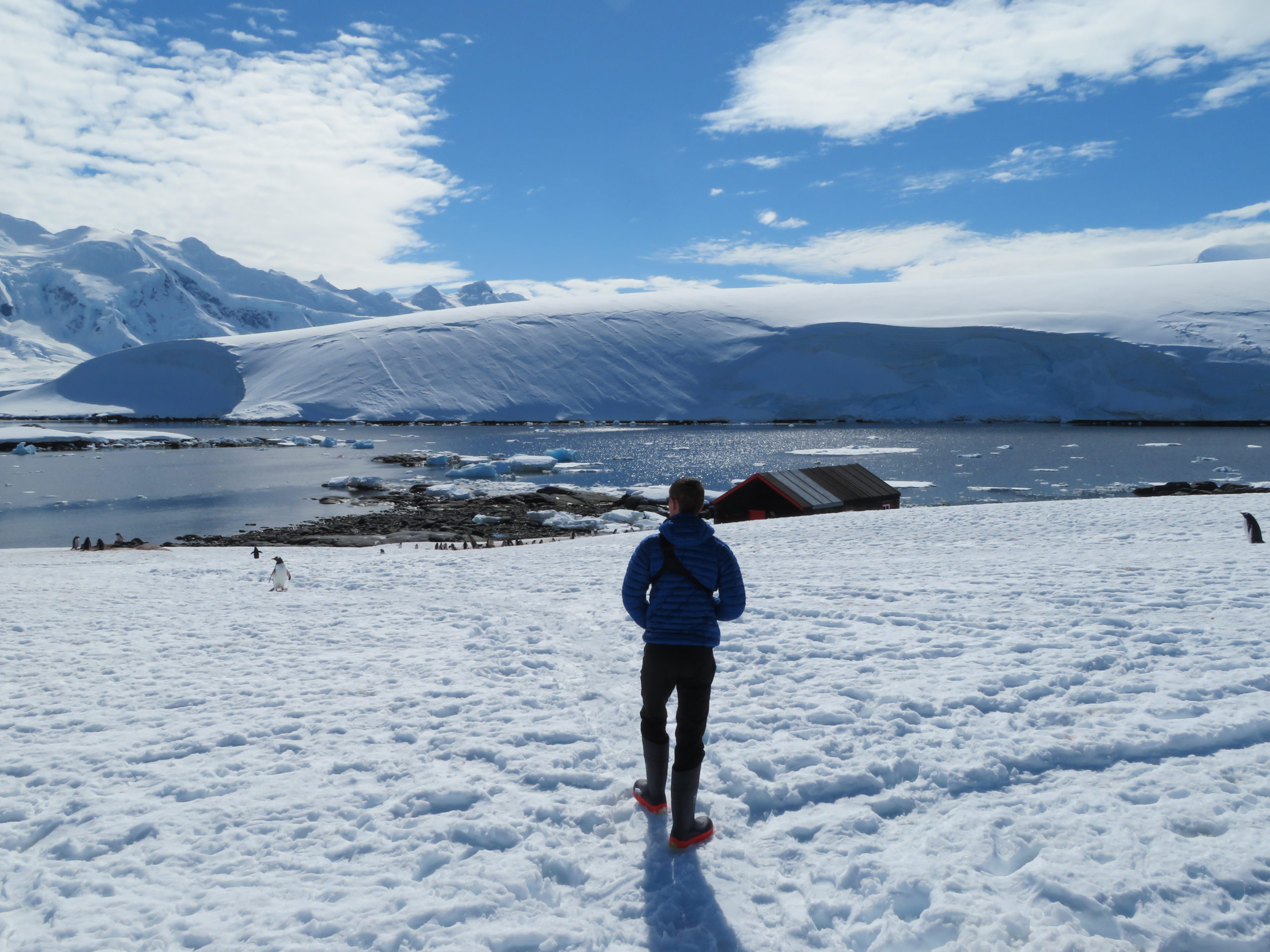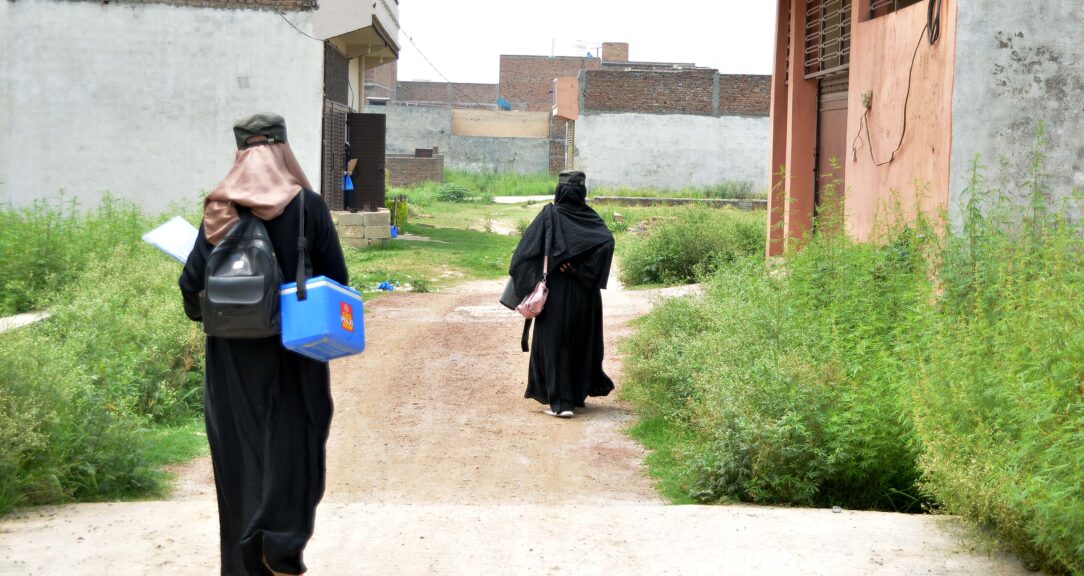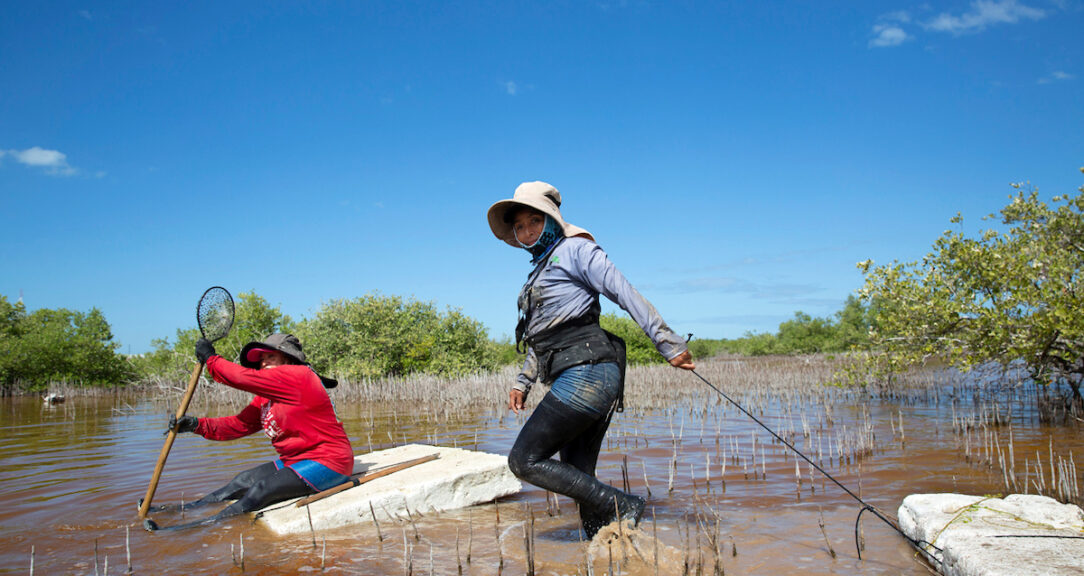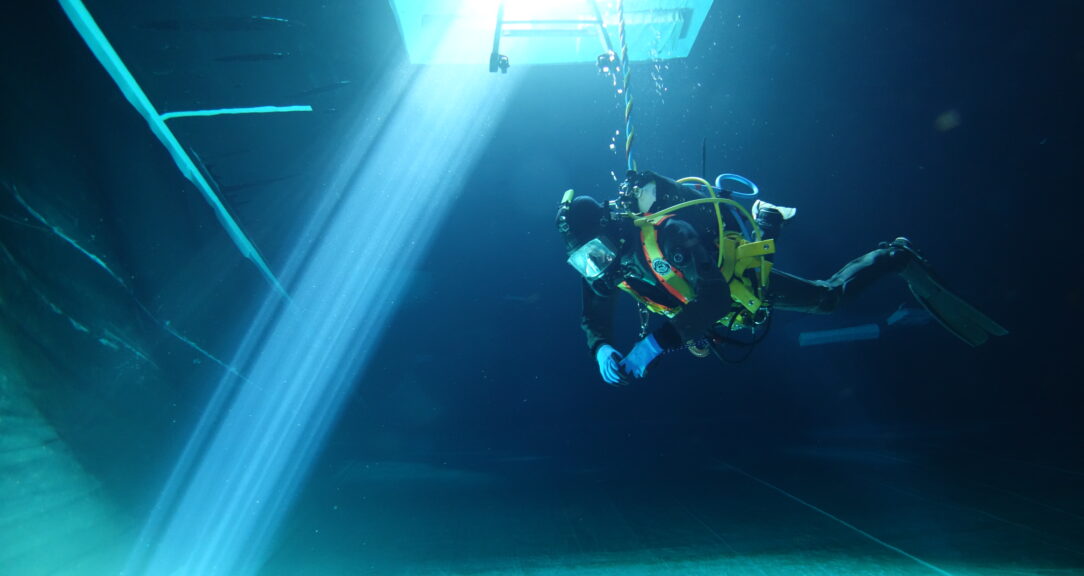Of the five months he spent in Antarctica, one evening holds a particular place in Kit Adams’ memory. Sitting around with his colleagues in the 11 p.m. sunshine of the austral summer, Adams pointed across the bay, “drawing diagrams and trying to explain how the glacier right behind us was working and how it was moving.”
Although Adams has a master’s degree in Polar and Alpine Change, he wasn’t on the continent for science. He and his colleagues were there to run the remote British outpost Base A, also known as Port Lockroy — often called the penguin post office.
Adams worked the one-of-a-kind job from November 2019 to March 2020 when he was 26. Originally from Northern Ireland and now working in Switzerland, he couldn’t turn down the opportunity of employment in one of the most remote places in the world.
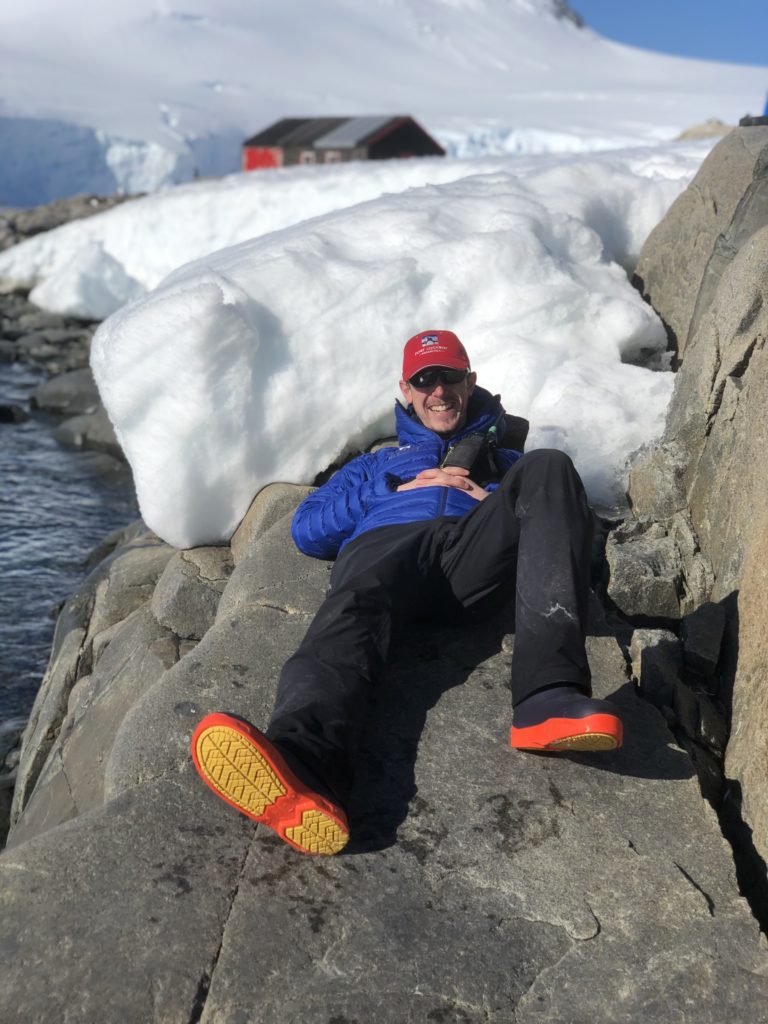
Located on Goudier Island, off the Antarctic Peninsula, the base was established in 1944 and run as a British research station until it closed in 1962. Designated a historic site and monument under the Antarctic Treaty, the abandoned base was restored in 1996 as a museum. Today it consists of three buildings, the largest of which is Bransfield House, which has a souvenir shop, post office and living museum that replicates a mid-century science base. As well as entertaining visitors, Port Lockroy promotes the work of the United Kingdom Antarctic Heritage Trust, the British charity that manages and preserves historic buildings and artifacts in Antarctica.
Before the pandemic, one or two ships typically visited the base every day throughout the Antarctic summer season, which runs from November to March. During these months, the average temperature on the island is about 2 degrees Celsius (36 F) with almost 24 hours of sunlight.
About 18,000 visitors annually tour the museum, purchase souvenirs at the shop and mail postcards from the penguin post office. Nesting just outside are about 800 breeding pairs of gentoo penguins, seemingly unbothered by their human neighbors. The U.S. dollar is the official currency of the base but, due to the challenge of procuring change, credit cards are preferred. As one of the continent’s most-visited tourist attractions, and one of the few bases that welcome visitors, Port Lockroy requires a small team to keep it running, which is how Adams found himself there in November 2019.
Every year, the trust recruits a handful of staff to work at Port Lockroy to run the museum, shop, post office and maintenance program. While they each have a role, they typically share all duties and monitor the impact of visitors on the environment and penguin population. (Fortunately, so far, no adverse effects have been observed.) The staffers live and work on the rocky, soccer-field-sized island for the whole season, sharing a one-room Nissen hut with bunk beds and a small kitchen.
There is no permanent population in Antarctica — about 4,000 people work on the entire continent in the summer months, and just 1,000 stay over the winter each year. Jobs postings are almost exclusively for scientists and support staff at the national research stations. So Port Lockroy provides a rare opportunity for polar enthusiasts without backgrounds in the sciences to experience life in the field.
The postings require a certain kind of stamina, as the Antarctic Heritage Trust job description details: “A can-do attitude is vital as is good physical fitness, coordination … environmental awareness and a practical knowledge of minimum impact living. Above all, successful candidates need to be passionate about the Antarctic.”
The jobs are open to all nationalities, and post office experience isn’t required. “That’s the thing,” Adams says, “you don’t need to have any specific qualifications. You have to be the kind of person that will lend a hand, be able to get on with people, and not be shy about public speaking. I suspect I’m in a little bit of a niche that my educational background is actually in these kinds of environments. I already have this vested interest and passion for this kind of place.”
Adams considers himself “extraordinarily fortunate” to have landed the role, especially given the competitiveness of the recruitment process. In 2014, there were 82 applicants for the four jobs. Then the documentary “Penguin Post Office” aired on BBC2 in the U.K. and on PBS in the U.S. — in 2015, more than 1,500 hopefuls applied.
For Adams, it wasn’t the TV show that sparked the idea but a chance encounter with a Port Lockroy veteran who told him about his experience while they were both working in Switzerland. He applied in 2019, along with more than 200 people.
The trust invited 12 contenders to a selection process held outdoors. “That in itself was quite intense,” Adams says. “It’s something that you can’t really do over Zoom … You need to meet the people and see how they get on to make sure that, when they’re stuck on an island for five months, they can manage and cope.”
The process lasted two and a half days, and “they purposely make the days long,” Adams says. “You are tired. They want to see — not necessarily when you’re at your weakest or most vulnerable — but they want to test you. There’s no point sending the wrong person down, or even pretending to be something that you’re not at the selection process.”
Applicants were required to perform various tasks including giving a presentation in preparation for the public speaking they’d have to do on the island, demonstrating computer literacy (for such jobs as keeping track of stamps and waste), as well as doing “team building, to see how you react under pressure or as part of a team.”
One of the odder challenges was moving jerrycans. “Once you get down there, it’s something that you actually have to do,” says Adams. “There’s no running water on the island. The ships that come to visit give you your water in 20-liter jerrycans, and you have to carry them up the island.” Each one weighs 20 kilograms (44 pounds). The hiring managers want to see: “Do you try to be the strong person and try to carry them all at once and potentially injure yourself? Or do you take your time and do it one at a time? It’s interesting, the psychological aspect being paired with the physical aspect of it all.”
Having finally secured the job, Adams was given the role of postmaster, and a few months later, the team headed for Antarctica via Argentina.
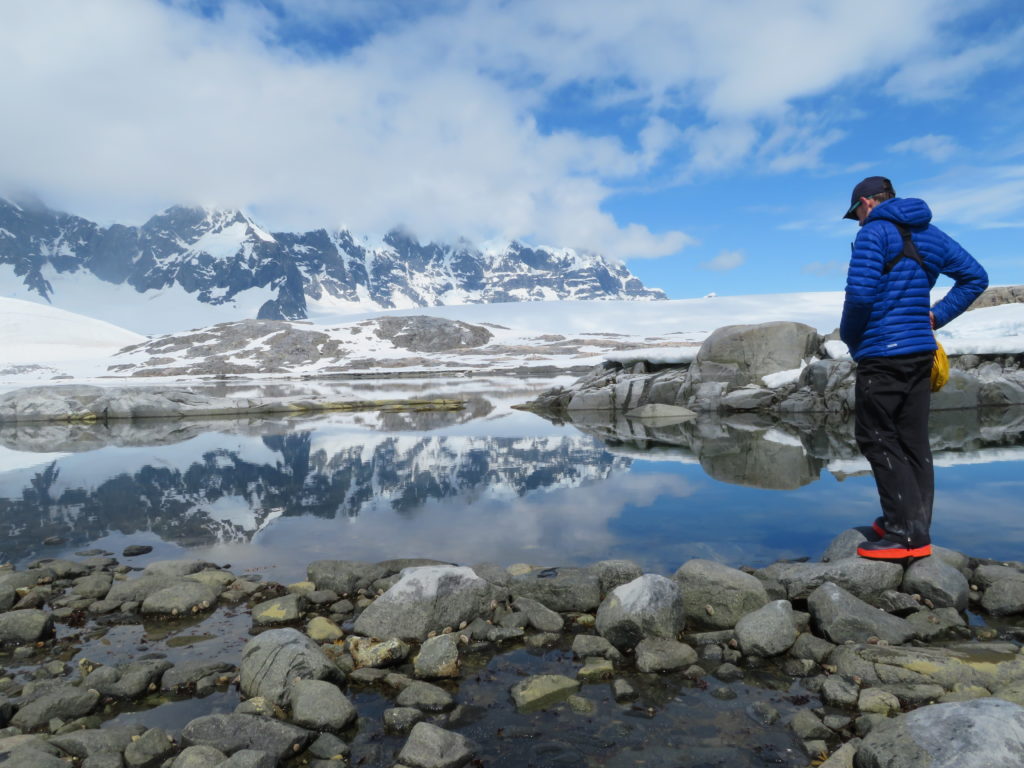
On a typical day, he’d be up before 7 a.m. to prepare the landing site. “If it was early in the season, that would be shoveling snow and making it level, cutting steps into the snow,” he says. “Because overnight it could have melted, thawed or collapsed from the previous day.”
On a busy day, they’d have one cruise ship in the morning and one in the afternoon, and one of the Port Lockroy people would go on and talk about what to expect and the history of the place. The passengers would come on shore, go through the museum, look at the penguins and send a postcard from the shop. They’d repeat the process with the second ship in the afternoon, and wrap up around 6 p.m.
But the work wasn’t over. After cooking dinner (the staff arrives on the island to a reserve of food and then receives supply drops), he’d catch up on other work such as processing the postcards to be mailed. The station handles about 70,000 postcards in a typical year, for tourists and by postal request from people all over the world. Adams even sent one to the International Space Station, via Russia, during his tenure. He’d bundle the postcards up in a postal bag and send the bag onto a cruise ship headed to the Falkland Islands, where they entered the U.K Royal Mail system.
The staff at Base A gets one day off every two weeks. They take it all together and close the base, as running it would be impossible with even one person missing. “It was so busy the rest of the time that it was nice when everything could just stop,” Adams says. “You’d maybe read a bit of a book, go outside and just appreciate where you were, try and watch or listen to whales, look at the penguins. It’s really, really tranquil and really, really serene.”
Adams was paid about $1,700 a month, and “the wonderful thing is that you don’t spend it,” he says. “Unless you’re buying something from your own shop or sending stuff like postcards. There’s no internet shopping; there’s no anything.” With room, board and travel all covered, it was easy to save.
Before leaving Antarctica in March 2020, Adams bought a postcard and stamp, addressed it to his home in Northern Ireland and popped it in the mailbox. While the Christmas gifts he’d sent a few months earlier reached his family within two weeks, the postcard didn’t arrive for a year. Due to the Covid-19 pandemic, there was no team at Port Lockroy last season, but a former staff member based in the Falkland Islands eventually went down to the penguin post office to empty the mailbox. It remains to be seen when the trust will open up applications once again.
Upon returning home to Northern Ireland, Adams went straight into lockdown. Now he’s back in Switzerland, working at an international school and enjoying the students’ curiosity about his experience.
“It definitely opens your eyes to the wealth of possibilities,” he says. “You can show kids that you don’t need to do a traditional 9-to-5 job in an office. If there’s somebody doing something, there’s a job there.”
Read more
Sign up to keep up to date with ReThink Q.
